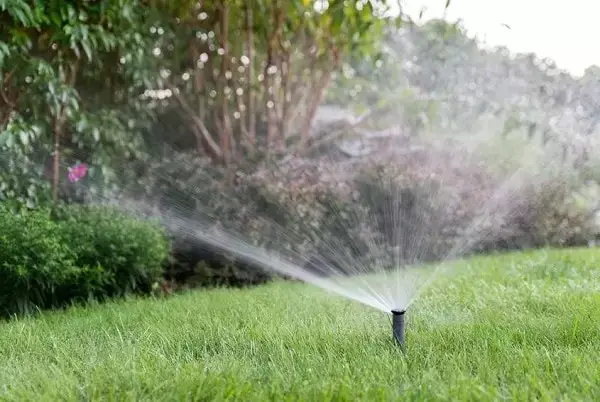Will Grass Grow Through Winter?
Last Updated on November 24, 2025 by Duncan
Are you wondering whether grass will grow through winter? You should know that it depends on your region.
If you live in warmer areas, grass can still grow in winter, but it will likely take longer than in the hot months. Less sunlight and lower temperatures are bound to limit lawn development, but it usually persists nonetheless.
However, if the weather becomes too cold, your grass may stop growing and enter dormancy. When does the grass cease growing? This typically occurs when temperatures drop below 40 degrees Fahrenheit.
How do you get your lawn ready for winter?
Preparation is key to getting your lawn ready for winter. Some of the things you should do include:
Aerate your lawn
It is critical to allow your grass to rest during the winter months. You should use aeration tools to loosen compacted turf and remove soil and grass plugs. You can use several different types of aerating tools.
A hand-aerating tool resembles a pitchfork with hollow tines. There are other gasoline-powered machines available that you can use. They are about the size of a lawnmower and ideal for larger yards.
Manually aerating your lawn can be time-consuming, but creating microscopic holes in the soil allows much-needed oxygen, nutrients, and water to reach the roots.
This not only helps the roots grow deeper into the soil but also minimizes compaction and increases your lawn’s chances of survival during winter.
Aerating your grass allows seeds to germinate and new grass to grow and spread without competing with bothersome weeds or compacted soil.
If you have children who enjoy playing in your yard or have a high-traffic lawn, aeration is a good move at least twice a year: once in the fall and once in the Spring.
If you only want to aerate your yard for aesthetic reasons, you can do so once each year.
Fertilize your lawn before the first frost.
Fertilizing in the late fall, before the first frost, can provide your grass with vital nutrients that it can absorb and retain. As a result, it can survive the severe winter months and thrive once the warmer temperatures of Spring arrive. This should also be your final fertilizing of the year.
Lawns that are treated late in the season are usually the first to grow in the Spring. For a great experience, choose a fertilizer with a high phosphorus content (10-15% is ideal). This is critically necessary for root development.
If you live in a region where phosphorus-rich fertilizer is prohibited, consider nitrogen-rich alternatives. This fertilizer will stimulate root and shoot growth.
Rake up all the leaves before the first frost.
You should rake all of the leaves on the ground before the first frost. Raking will help reduce the number of brown patches and keep certain areas of your yard from becoming sun-deprived. Any leaves left on the ground will grow damp and create a barrier, making it difficult for the grass to breathe.
Instead of raking them up to burn or throwing them away, run your lawnmower over them many times to crush them into mulch. These shredded leaves will help your lawn resist desiccation and wind.
You can also buy a mulching blade and install it on your mower. This tool will make the leaves even finer. As an added advantage, as shredded leaves degrade, they provide organic material that feeds roots.
Continue mowing
One helpful fall lawn care tip is to keep mowing even as the chilly winter months approach. You should maintain a semi-regular mowing routine until the growth slows.
The best way to go about it is to keep your grass between 2 and 2.5 inches tall throughout the fall months. If the grass grows longer than three inches, it may begin to mat.
Once this occurs, your lawn may begin to suffer from a variety of problems, including mold and lawn diseases. However, if you cut it too short, its ability to store nutrients for growth will be compromised.
Control the weeds
Fall is an excellent time to eradicate perennial broadleaf weeds such as clover, plantain, dandelions, and creeping charlie. You can get rid of some of these annoying weeds by hand, but many are scattered across your lawn or confined to small areas, making manual weed management time-consuming.
A practical, albeit controversial, approach to eradicating these weeds is to spot-treat them with herbicide.
This is made easier with ready-to-use spray containers. Complete this treatment when the temperature is above 50℉ to allow the herbicide to penetrate and kill the weeds before the winter frost.
This is also an excellent time to remove any sticks or other trash from flowerbeds, behind shrubs, or stuck in the grass.
Seed your lawn in the fall.
Depending on your area, the soil temperature typically reaches 55℉ in fall. Because grass roots proliferate during the fall and winter, now is the best time to seed your lawn. While it may be tempting to choose the cheapest seed, it will cost you in the long term.
Cheap seed often contains weed seed, annual ryegrass seed, and hollow husks, which usually die after the first cold. If you want a lush lawn in the Spring, pay a few extra dollars and switch to premium seed, which is more likely to survive insects, illness, and drought.
After planting the seed, water it daily until it germinates. Typically, this takes between 10 and 20 days.
FAQs
When does grass start growing again?
Just as grass growth slows when temperatures fall below 8-10°C, growth resumes once temperatures rise above this level. Around March, grass will gradually return to life, with growth increasing as temperatures rise throughout the Spring and summer.
While this is the case, without adequate winter lawn care, your lawn may require a little boost to return to full health so it can be healthy once Spring arrives.
This is why it’s critical to provide your grass with the nutrients it needs through a winter lawn feed, which helps it withstand the effects of cold weather and winter lawn illnesses.
Can you install sod in the winter instead of overseeding?
Sod installation is best done during the warmer months, when roots properly establish themselves. Laying sod in chilly soil may hinder root development, especially if the ground freezes shortly thereafter. Overseeding with cool-season grass is a better solution during the winter.
Should I continue to use lawn equipment in cold weather?
Yes, but sparingly. If your winter grass is flourishing, you can mow it occasionally, but avoid using heavy equipment on frozen or soggy soil to prevent compaction and root damage.
Is it good to fertilize again in late winter?
It depends on the weather. In most cases, one well-timed fall application is adequate. Fertilizing too early in late winter will stimulate growth before your lawn is ready, potentially doing more harm than good. Wait until early Spring, unless a soil test indicates otherwise.
Can you use winter ryegrass year after year?
Yes, but it takes planning. Annual ryegrass dies off naturally in the Spring, necessitating regular overseeding each fall. If you want a more permanent solution, consider gradually incorporating perennial cool-season grasses.


